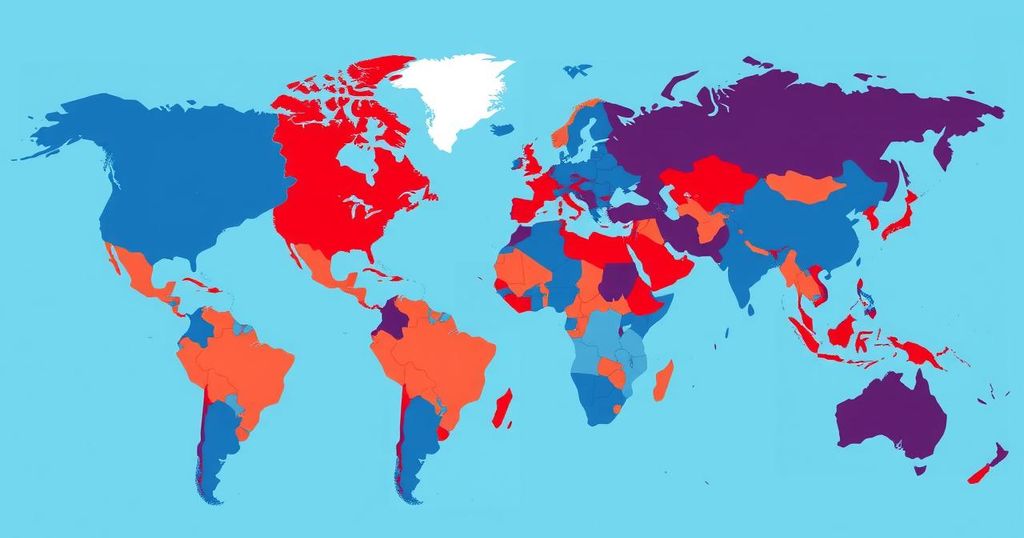Trump Proposes Expanded Travel Ban Targeting Forty-Three Countries
President Donald Trump has proposed an expanded travel ban, targeting forty-three countries with a three-tier classification system to enhance national security. The categories—red, orange, and yellow—determine the level of travel restrictions based on each country’s vetting processes. This proposal is currently in draft form and reflects ongoing efforts to safeguard U.S. borders amid concerns of potential threats.
On March 18, 2025, President Donald Trump proposed a comprehensive travel ban targeting forty-three countries as part of a revised three-tier system aimed at enhancing national security. This initiative stems from an executive order he signed on January 20, instructing cabinet members to identify nations whose citizens would face entry restrictions due to insufficient vetting processes. This approach follows a previous travel ban from his first term, with the goal of mitigating potential threats from high-risk nations.
The proposed travel ban, currently in draft form and developed weeks prior by the U.S. State Department, categorizes countries into three distinct lists: red, orange, and yellow. The administration is assessing the accuracy of the draft while determining which nations require additional screening before any final decisions are made.
The “red” list comprises eleven countries whose citizens would face a total travel ban due to noted deficiencies in their vetting processes, representing a significant national security concern. Countries on this list are subject to an outright prohibition from entering the U.S., underscoring the administration’s commitment to increasing security measures against ongoing global threats.
The “orange” list includes ten countries with limited travel restrictions. Although individuals from these nations would not face complete bans, they would be required to undergo enhanced vetting, including in-person interviews, prior to visa acquisition. The U.S. government closely monitors these countries to ensure that they rectify their vetting deficiencies.
The “yellow” list consists of twenty-two countries primarily from Africa. These nations have a 60-day timeframe to address specific concerns regarding their screening protocols. Failure to improve may result in their reclassification to either the red or orange lists, potentially leading to stricter travel limitations.
This travel ban reflects Trump’s continuing efforts to fortify U.S. borders and safeguard citizens from security threats. His executive order underscores the necessity of restricting entry for individuals who may pose risks, including those associated with terrorism or criminal activities. The proposed measures come in sharp contrast to the policies enacted by former President Joe Biden, who rescinded previous travel bans on his first day in office, highlighting a commitment to inclusivity.
In summary, President Trump’s proposed travel ban reflects a strategic effort to enhance national security by categorizing forty-three countries into a three-tiered system based on their vetting capabilities. The red, orange, and yellow lists delineate varying levels of travel restrictions aimed at mitigating security risks associated with terrorism and criminal activity. This proposal marks a significant shift in immigration policy, with ongoing debates about its implications for diversity and inclusivity in the U.S.
Original Source: www.travelandtourworld.com




Post Comment